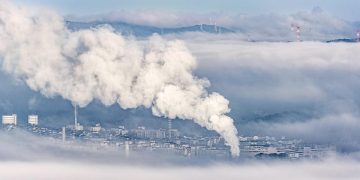Breaking Barriers: The Latest Climate Policy Initiatives Shaping Our Future
Climate change is one of the most pressing issues facing our world today. With temperatures rising, sea levels increasing, and extreme weather events becoming more frequent, it is clear that urgent action is needed to address this crisis. In recent years, there has been a growing recognition of the need for strong climate policy initiatives to curb greenhouse gas emissions and transition to a more sustainable future. In this article, we will explore some of the latest climate policy initiatives that are shaping our future and breaking barriers in the fight against climate change.
The Paris Agreement: A Landmark Climate Accord
The Paris Agreement, adopted in 2015, is a landmark international accord that aims to limit global warming to well below 2 degrees Celsius above pre-industrial levels, with a target of 1.5 degrees Celsius. The agreement requires countries to set ambitious emissions reduction targets and regularly report on their progress. One of the key features of the Paris Agreement is that it is a legally binding treaty, which means that countries are required to take action to meet their commitments.
The Paris Agreement has been heralded as a major step forward in the fight against climate change, with nearly 200 countries signing on to the agreement. However, there have been challenges in implementing the agreement, with some countries failing to meet their emissions reduction targets. Despite these challenges, the Paris Agreement remains a critical framework for global climate action and has set the stage for further policy initiatives to address the climate crisis.
The Green New Deal: A Bold Vision for a Sustainable Future
The Green New Deal is a policy proposal that aims to address both the climate crisis and economic inequality by investing in renewable energy, green infrastructure, and sustainable agriculture. The Green New Deal calls for a rapid transition to a low-carbon economy, with a focus on creating green jobs and reducing emissions from the transportation and building sectors. The Green New Deal has been championed by progressive politicians and activists as a bold vision for a sustainable future.
One of the key pillars of the Green New Deal is the goal of achieving net-zero greenhouse gas emissions by 2050. This ambitious target would require significant changes to the way we produce and consume energy, including a shift away from fossil fuels towards renewable sources such as wind and solar power. The Green New Deal also calls for investments in public transportation, energy-efficient buildings, and regenerative agriculture to reduce emissions and create a more sustainable economy.
Carbon Pricing: A Market-Based Approach to Emissions Reduction
Carbon pricing is a policy tool that aims to reduce greenhouse gas emissions by putting a price on carbon pollution. There are two main types of carbon pricing: carbon taxes and cap-and-trade systems. Carbon taxes impose a fee on the carbon content of fossil fuels, while cap-and-trade systems set a limit on emissions and allow companies to buy and sell emission allowances.
Carbon pricing has been adopted by a number of countries and regions around the world as a way to incentivize emissions reductions and promote clean energy alternatives. The effectiveness of carbon pricing depends on the level of the carbon price and the coverage of the policy, with higher prices and broader coverage leading to greater emissions reductions. While carbon pricing has been effective in some jurisdictions, there have been challenges in implementing the policy, including concerns about the impact on low-income households and the need for international cooperation to address emissions from global supply chains.
Renewable Energy Targets: Accelerating the Transition to Clean Energy
Renewable energy targets are policy initiatives that set goals for the adoption of renewable energy sources such as wind, solar, and hydro power. These targets aim to increase the share of renewable energy in the electricity mix and reduce reliance on fossil fuels. Many countries and regions have adopted renewable energy targets as part of their climate policy initiatives, with some jurisdictions aiming to achieve 100% renewable energy by a certain date.
Renewable energy targets have been successful in driving investment in clean energy technologies and reducing emissions from the electricity sector. In some cases, renewable energy targets have led to rapid growth in the deployment of wind and solar power, with costs falling and capacity increasing. However, there are challenges in meeting renewable energy targets, including the need for grid upgrades and storage solutions to accommodate intermittent renewable energy sources. Despite these challenges, renewable energy targets remain a critical tool for accelerating the transition to a low-carbon economy.
Adaptation and Resilience: Building Climate-Resilient Communities
In addition to mitigation efforts to reduce greenhouse gas emissions, adaptation and resilience measures are essential for addressing the impacts of climate change. Adaptation initiatives aim to help communities prepare for and respond to the effects of climate change, such as sea level rise, extreme weather events, and changes in temperature and precipitation. Resilience measures focus on building the capacity of communities to withstand and recover from climate-related disasters.
Adaptation and resilience initiatives can take many forms, including building seawalls and flood barriers, improving water management systems, and planting trees to provide shade and reduce urban heat islands. These measures can help protect vulnerable populations and infrastructure from the impacts of climate change and build more resilient communities. In recent years, there has been a growing recognition of the need to integrate adaptation and resilience into climate policy initiatives to ensure a more sustainable and equitable future.
Conclusion: A Call to Action for Climate Action
In conclusion, the latest climate policy initiatives are breaking barriers and shaping our future by accelerating the transition to a more sustainable and resilient economy. From the Paris Agreement to the Green New Deal, carbon pricing, renewable energy targets, and adaptation and resilience measures, there are a range of policy tools that can help address the climate crisis and build a more sustainable future. As the impacts of climate change become increasingly severe, urgent action is needed to reduce emissions, protect vulnerable communities, and build a more resilient world.
It is up to policymakers, businesses, and individuals to take action on climate change and support the implementation of these critical policy initiatives. By working together to reduce emissions, invest in clean energy, and build climate-resilient communities, we can create a more sustainable future for generations to come. It is time to break barriers and shape our future by taking bold and ambitious action on climate change. Let us rise to the challenge and build a more sustainable and equitable world for all.





